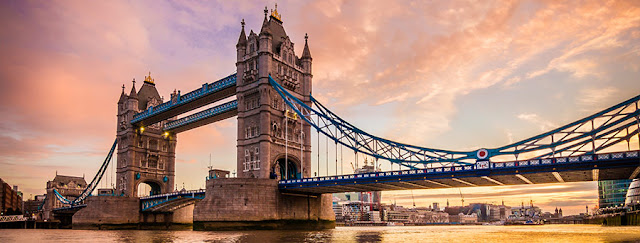London Facts
Tradition and history are nevertheless omnipresent in London: In the historic center, one attraction follows the next. Traditions like the key ceremony in the Tower survive the rapid changes that the city is exposed to.
It all started with the Romans: Londinium
Despite the fast pace of the city, you can feel the breath of history in London. In 43 AD the Romans invaded Britain and founded the small port settlement Londinium on the site of what is now London.
The place on the south bank of the Thames, today's district of Southwark, was strategically located and was soon connected by a bridge to the north bank, today's City of London.
After the fall of the Roman Empire in the 5th century, the city initially fell into disrepair. In the 9th century, the Anglo-Saxons conquered the area around the Thames estuary and founded the city of Lundenburgh.
London became the British capital after the renewed, this time Norman conquest in 1066. The London Tower also dates from this period. It has been expanded again and again over time and now houses the British Crown Jewels, among other things.
It was not until the 17th century that London was changed on a large scale. For one, the plague raged in this century and decimated most of the population. Second, four fifths of the medieval city was destroyed by the "Great Fire" of 1666.
Picture of William the Conqueror and Westminster Abbey in London.London City History 01:35 min. Available until 02/28/2025
Boom and expansion - London as a cosmopolitan city
The city has been growing steadily since the 18th century. The explosive economic growth in the 19th century made London the largest and richest city in the world. England was a pioneer in industrialization. At the latest with the construction of the British railway at the beginning of the 19th century, everyone wanted to go to the capital, where there should be work and money.
Thanks to the train connection to the surrounding towns, London's city center soon continued to expand. Green areas and fields were built on, and surrounding villages docked onto the urban area. In just a few decades the population multiplied and London became the largest city in the world. With the numerous British colonies scattered around the world, London has long been the capital of a huge empire.
Even today, the city on the Thames seems to be a collection of many villages, a patchwork quilt that offers diversity and mass. There is still no one inner city in London, but London is made up of many different districts.
Map of central London showing some of London's many central areas
Very British - tradition and ritual
London is the old lady among world cities. In addition to the traditional royal family, the hatter of the Queen or the shoemaker, who custom-made the finest shoes in the old tradition, you will come across numerous historical ceremonies in the British capital. The famous changing of the guard of the courtly guards at Buckingham Palace is probably the best known.
Many cultural idiosyncrasies such as the elegant afternoon tea also persist. At the richly laid table in the idyllic "Orangery" in Kensington Gardens, tea, finger-shaped sandwiches and cones, the typical tea biscuits, beckon. Even those who are not aristocratic or extremely rich can sniff a bit of genteel air in the salons of the magnificent hotel restaurants and mingle with the noble guests for afternoon tea.
The British Teatime gives you an enjoyable break from the hustle and bustle of everyday life in London. Because there is also plenty of noise and hectic. In addition to all tradition, London is loud, modern and hectic. In the times of globalization, the tradition begins to crumble in many places.
In 2005, for example, the famous red double-decker bus was abolished from regular service. Today there are only a few tourist routes on which the bus with a doorless rear entrance runs. Likewise, the decent queue or the classic bowler hat as a headdress is rarely found in London.
Bus at night Almost disappeared from the cityscape: the red double-decker bus
City of contradictions and breaks
Greater London is the smallest but most densely populated of the nine regions of England. The administrative area was established in 1965 and covers the entire metropolitan area of London. About 14 million people live here. An attractive diversity is presented in a confined space, which lives above all from its contradictions and breaks.
"Bulky" is a characteristic that applies to London more than any other city. There is everything here: art and culture, theater and architecture, bizarre, historical and hypermodern - everything is available in abundance. There are 40 theaters in the central City of Westminster alone.



Comments
Post a Comment